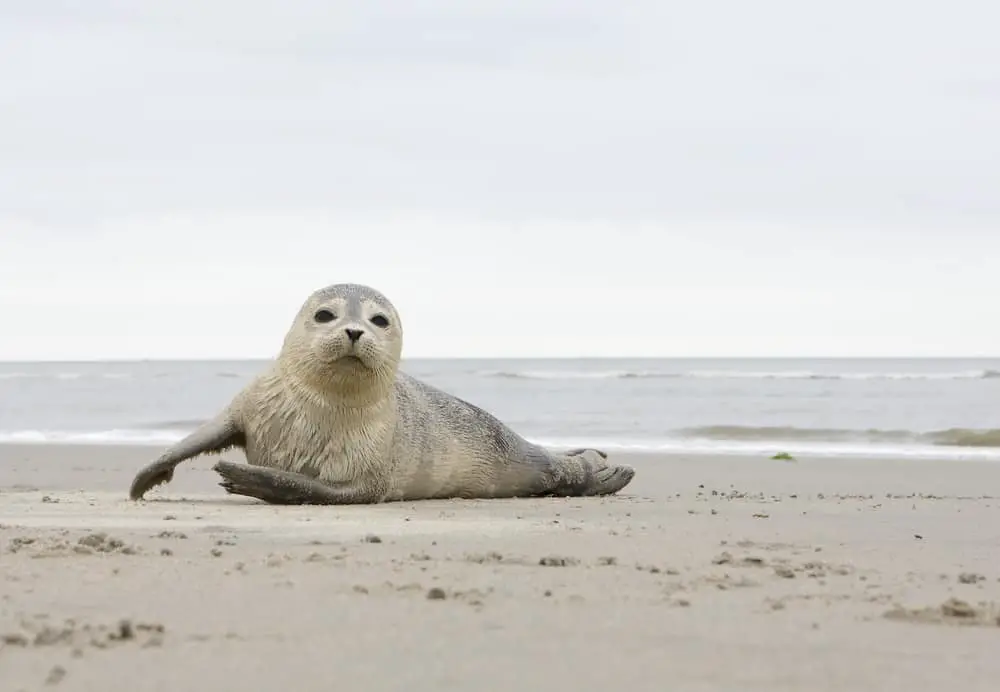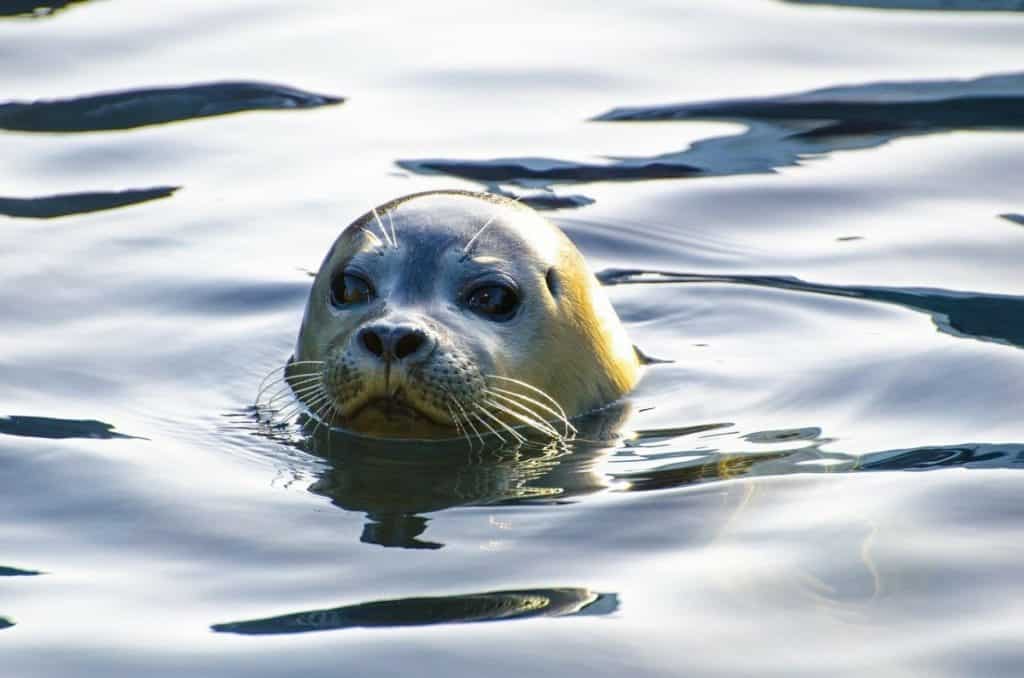Seals are marine mammals that inhabit both temperate and polar regions of the world’s oceans. A wide range of species exist, with different behavior, diet, and migratory patterns.
The vast majority of seal species depend on coastal environments for shelter and food. These areas provide them with access to a diverse array of resources while also providing protection from predatory animals such as sharks or orcas. Many species have adapted well to human activity in these areas, allowing them to survive and thrive despite increased disturbance levels.
Furthermore, some species migrate seasonally between various habitats according to changes in prey availability or water temperature. In addition, there is evidence that several seal species can be found far out at sea beyond the continental shelf break.

Seals are found in various regions across the globe, inhabiting both temperate and polar waters. Here is a table highlighting some common locations where different seal species can be found:
| Seal Species | Habitat and Geographic Range |
|---|---|
| Antarctic Fur Seal | Antarctic region, including South Georgia and South Sandwich Islands, and other sub-Antarctic islands |
| Arctic Seal (Ringed, Bearded, Harp, Ribbon) | Arctic region, including the Arctic Ocean and surrounding seas |
| Weddell Seal | Antarctic region, specifically the Weddell Sea area |
| Elephant Seal (Northern and Southern) | Northern: North Pacific Ocean, from California to Alaska; Southern: Sub-Antarctic regions, including South Georgia and the Falkland Islands |
| Harbor Seal | Coastal waters of the Northern Hemisphere, including North America, Europe, and Asia |
| Grey Seal | North Atlantic Ocean, including coastal regions of Europe, North America, and the Baltic Sea |
| Mediterranean Monk Seal | Mediterranean Sea and surrounding areas |
| Hawaiian Monk Seal | Northwestern Hawaiian Islands and some parts of the main Hawaiian Islands |
| Leopard Seal | Antarctic region, including the Antarctic Peninsula and sub-Antarctic islands |
| Crabeater Seal | Antarctic region, primarily found along the pack ice edge |
| Antarctic Weddell Seal | Antarctic region, specifically around the Antarctic Peninsula and Weddell Sea |
Please note that this table provides a general overview, and specific ranges and habitats may vary for each seal species within their respective geographic regions.
Coastal Habitats
Seals are well-adapted to living in a variety of coastal habitats and can be found around the world.
From Arctic ice floes to tropical coral reefs, seals use these areas as breeding grounds, feeding grounds, and resting sites.
With their streamlined bodies and powerful front limbs they have evolved for efficient swimming and diving abilities.
Seals rely on both terrestrial and aquatic environments to survive; they breed, molt, rest, socialize, and feed in different locations depending on the time of year or seasonality.
As semi-aquatic mammals, they spend most of their lives near shorelines but make regular journeys offshore during migration periods.
The primary marine habitat used by seals includes continental shelves where sea temperatures range from 10°C – 20°C (50°F – 68°F).
These regions provide an abundant food source including benthic organisms such as crabs, shrimp, squid, fish, octopus and other invertebrates that comprise the majority of their diet.
Breeding grounds may include rookeries along coastlines with rocky cliffs or sandy beaches while some species prefer isolated islands surrounded by deep waters away from human disturbance.
Furthermore, many species feed within sheltered inshore waters such as estuaries or bays which offer protection against larger predators like orcas or sharks.
Thus it is clear that seals depend heavily upon diverse coastal habitats for their survival needs worldwide.
Hawaiian Monk Seals’ Predators Revealed: Unraveling the Threats
Human Activity
Coastal habitats are home to many species of seals, from the northern fur seal and Steller sea lion to harbor seals. These habitats provide a variety of resources that these marine mammals rely on for their survival.
However, human activities such as fishing industry operations and noise pollution can have detrimental effects on coastal ecosystems and threaten the lives of seals living in them. The fishing industry is one of the major threats facing coastal habitats. Bycatch caused by commercial fisheries leads to decreased food availability for seals, while damage caused by trawling reduces access to important feeding grounds or resting areas used by these animals.
Noise pollution generated by ships impairs communication between individuals within populations, leading to further disruption in social behavior patterns. Additionally, it creates an increase in stress levels among individuals which negatively affects health and reproductive success. To address this issue, researchers suggest using quieter vessels like electric-powered boats when conducting maritime operations near coastal environments inhabited by seals.
Ringed Seals’ Predators Revealed: Unmasking the Threats
Seasonal Migrations
Seals are widely distributed throughout many of the world’s oceans and seas, where they can be found in polar, temperate and tropical waters. They have evolved remarkable adaptations to thrive in their aquatic environment.
One such adaptation is that seals are capable of long-distance migrations during different parts of their breeding cycle. Their homing behavior enables them to return back to familiar grounds for mating and pup rearing.
Arctic species:
- Ringed Seals migrate from high latitude feeding areas closer to shorelines for birthing and pupping.
- Bearded Seals make seasonal movements between summering sites on pack ice far off the coast and winter haulouts near coastal islands or mainland shores.
Subarctic species:
- Harbour Seals travel along coasts from British Columbia at one extreme to Greenland at the other.
- Grey Seals move between shelf habitats over a wide range of latitudes, going as far south as Massachusetts Bay in some years.
These marine mammals often take advantage of oceanographic features like eddies which contain warm water masses facilitating faster swims across large expanses. This also helps explain why an individual may sometimes appear on a beach thousands of miles away from its usual habitat when it returns home after a successful migration!
Continental Shelf Break
The continental shelf break is a major habitat for seals, providing them with the ideal environment to sustain their breeding grounds. Seals are able to access food sources such as fish and squid that live near the edge of the continental shelf drop off. This also allows them to take advantage of deeper water currents which makes it easier for them to travel in search of new habitats or migratory routes.
In light of these observations, it is evident that the continental shelf break provides an optimal habitat for seals to source their sustenance from various depths within the ocean ecosystem. By understanding how individual species interact with their environment we can gain insight into how they utilize natural resources available in order to survive and thrive within their respective ecosystems.

Deep Sea Habitats
Seals inhabit a variety of habitats, including deep sea environments.
There are approximately 33 species of seals that live in the world’s oceans today, with an estimated 6 million individuals worldwide.
Deep sea seals inhabit areas where depths exceed 200m and temperatures range from 0-10°C.
These animals feed on a diverse aquatic diet consisting primarily of fish and squid, but also krill and other crustaceans depending on their location.
Seals have adapted to their environment by developing thick fur coats for insulation against cold water temperatures, along with webbed paws for efficient swimming.
Mating behavior among deep sea seals is distinct compared to terrestrial counterparts; males will vigorously compete for access to females during breeding season.
Female seals often return to the same mating site year after year while males may travel long distances across multiple sites in search of mates.
Additionally, male seals are known to form alliances and cooperate when trying to secure copulation rights over female partners.
Understanding these behaviors can help us gain insight into how this species has evolved over time to survive in its underwater habitat.
Conclusion
Seals are a unique species of aquatic mammal which inhabit both coastal and deep sea habitats. Their ability to survive in such varied ecosystems is due to their adaptability, as well as the range of resources available throughout the world’s oceans.
Seals primarily dwell near coastlines, with some migrating seasonally for food sources or breeding grounds. A significant portion of seals also reside on continental shelf breaks, taking advantage of prey congregations there.
Finally, many species have been documented living beyond this depth, demonstrating that they can thrive even in the depths of open seas. Through its amazing capacity to live almost anywhere in the ocean, it is clear that seals are highly specialized creatures able to make use of virtually any environment they encounter.

